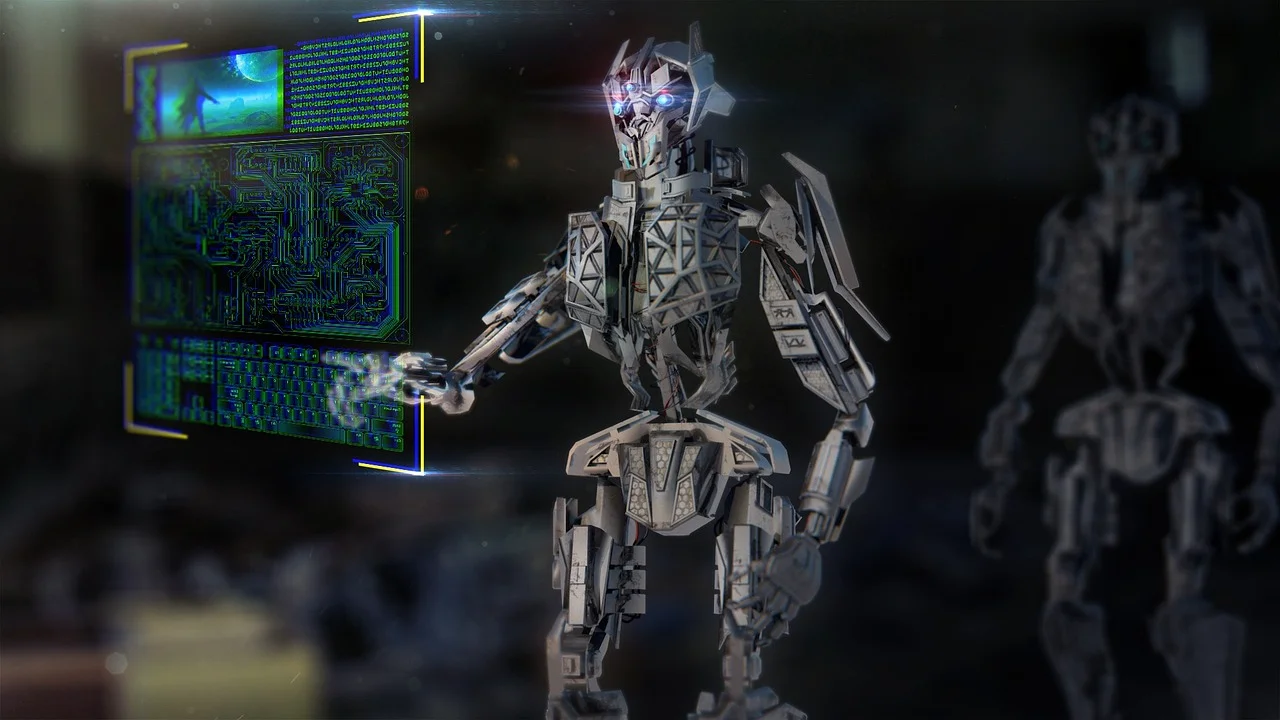At the machine parts manufacturer, S&D Blech, the person in charge of operating the grinding machines is getting ready to retire. In Germany, where there is a serious shortage of available workers, it’s becoming increasingly challenging to find qualified individuals willing to take on the skilled but tough, dirty, and potentially dangerous manual labor involved in this job. As a solution, the company is planning to introduce a robot to fill this role.
This trend of automation is not unique to S&D Blech. Many other small and medium-sized companies are also exploring automation options because the labor force is shrinking due to the retirement of the post-war “baby boom” generation in Germany, making it increasingly difficult to find the right people to do these jobs.
In June, official data revealed that there were about 1.7 million job openings in Germany. The German Chambers of Commerce and Industry (DIHK) reported that over half of companies are finding it really hard to hire people for these vacant positions. This struggle is estimated to cost the European Union’s largest economy nearly 100 billion euros (which is roughly $109 billion) each year in terms of economic growth.
Henning Schloeder, the managing director, explained that this ongoing challenge is the reason why S&D Blech has been increasingly adopting automation and digitalization in their operations over the past few years. He mentioned, ‘This move towards automation and digitalization will worsen the already tough situation in finding skilled labor, especially in production and craftsmanship.’
Locating a replacement for the person in charge of the grinding unit was quite a challenge,” Schloeder explained. “This wasn’t just because of his extensive experience but also because it’s a really tough job that people aren’t eager to take on anymore.”
Machine grinding is a demanding task, involving intense heat, constant noise, and the risk of flying sparks that can be hazardous.
In recent years, Germany has seen a rise in the number of women in the workforce, along with an increase in immigration. These factors have helped offset the effects of changing demographics in the country.
As the baby boomer generation retires and a smaller generation, due to low birth rates, enters the job market, the Federal Employment Agency anticipates that the number of available workers will decrease by around 7 million people by 2035.
These demographic shifts are not unique to Germany; they are happening in other developed countries as well. Nela Richardson, the chief economist at ADP, a global payroll and HR services provider, stated, “In the long run, all these technological advancements, from robotics to AI, will revolutionize the way we work. Everyone will approach their jobs in a different way.”
Germany is already a significant player in the automation field. The country has made substantial investments in automation, particularly in industries like automotive manufacturing, making it the world’s fourth-largest market for robots and the largest in Europe. This reflects the global trend towards embracing automation technologies.
With the decreasing cost and increased user-friendliness of robots, even the typically family-owned Mittelstand businesses, which form the economic core of Germany, are embracing automation. This shift is happening across various sectors, ranging from manufacturers like S&D Blech to bakeries, laundries, and supermarkets.
In the previous year, approximately 26,000 robots were installed in Germany, a number that was only exceeded in 2018. The pandemic caused a slowdown in the growth rate, which had been averaging around 4% annually.
“Robots are becoming the lifeline for companies that are worried about their future due to a lack of available workers,” explained Ralf Winkelmann, the managing director of FANUC Germany, a company that sells approximately half of its Japanese-made robots to small and medium-sized businesses.
Ralf Hartdegen, who operates a consulting firm assisting companies in this kind of transition, pointed out that businesses eager to automate but reluctant to lay off employees are increasingly structuring their automation plans around natural workforce reductions, like retirements.
ROLEC, a family-run company that manufactures systems to safeguard industrial electronics and control equipment, entered the world of robotics last year. They purchased their first robot to keep production running smoothly during the night. The company has already acquired a second robot and intends to continue investing in automation.
CEO Matthias Rose expressed his satisfaction, saying, “It’s a great feeling to switch on the lights in the morning and find the parts neatly processed and ready in the storage container.”
The trend toward increased automation is partly because robots have become more user-friendly, eliminating the need for programming skills. Nowadays, most robots are equipped with a Human Machine Interface, which is like a touchscreen on a smartphone, making them easy to operate. Florian Andre, a co-founder of SHERPA Robotics, a startup catering to companies with 20 to 100 employees, highlighted this advancement.
Surprisingly, even workers and trade unions, who were once concerned about job losses, are now looking at automation more positively. According to a survey conducted by the robot marketplace automatica in June, nearly half of German employees see robots as a solution to address labor shortages.
ROLEC’s Rose explained that their initial foray into automation in 2022 was prompted by a substantial backlog of orders, which forced employees to work overtime and on Saturdays. He added, “It was a good starting point for our first robot because it was seen as a helper rather than competition.”
A representative from Germany’s influential IG Metall trade union emphasized that when companies integrate robots into their long-term plans, rather than just using them for immediate cost-cutting, it can lead to a more “healthy, engaging, and secure” work environment.
Daimler Truck, a manufacturer of lorries and buses, relies heavily on robotics, especially for tasks that involve heavy lifting and potentially strain the physical health of workers. However, Matthias Krust, who heads the company’s works council, pointed out, “Even though robots are valuable, there’s nothing more adaptable than a human. The more intricate and diverse the production process, the more challenging it can be to effectively employ robots.”





